Old School New York City writer George Colon aka AIM SSB credits graffiti with having saved his life in the early 70’s. Decades later, he is back in the game — this time with a message beyond his name.
When and where did you first get up?
I was living in Williamsburg, on South 3rd Street off Bedford. It was in 1970. I was 10 years old. I remember looking at a clean wall in my hallway building and thinking. “My name would look good there!” I started off using shoe polish.
What other surfaces did you hit up back then?
Other hallways, mailboxes and telephone booths. The city became my playground. Soon I was hitting trains and station walls.
What inspired you to keep tagging?
I saw how much it was embraced at Art and Design, the high school I attended at the time. And it gave me something to do.
Have you any early graffiti-related memories that stand out?
Seeing phenomenal handstyles — such as those of Super Strut, Stay High and Super Kool 223.
Did you generally go out alone or did you get up with crews back then?
Two of my classmates at Art and Design took me up to the yards up at Baychester and Parkchester. Once I discovered them, I was on my own! But then in 1972, I went on to form SSB, one of the largest crews in NYC. We SSB members saved each other’s lives. And graffiti saved us all, by giving us a voice and offering us an alternative to the drugs, gangs and violence that were everywhere around us.
How were you known at the time?
I gained popularity as AIM-SSB, but I was also known as OH-222 SSB to confuse the cops.
What did AIM stand for? How about SSB?
AIM was an acronym for Artist in Motion and SSB for Soul Stoned Brothers.
Who were some of the other SSB members?
There were many: Lee Quinones, Shadow, CAM, Do, Rise, Bang 2, Taxi, Fear, Toke, Bomb-One, Jazz, Jazz 2, Pace, Don1, Dime 139 and more.
What is the riskiest thing you did? And why did you do it?
Laying on top of a train while it was running from the Bowery to Essex Street. I was with Chino 13 at the time, and we did it to escape the TA rats.
How did your family feel about what you were doing?
When I first started drawing, my mother encouraged me. She would buy crayons and pastels for me. But when I got into graffiti, my mom was concerned. She’d say things like, “Why are you getting paint on your sneakers?” But they didn’t pay all that much attention to what I was doing.
Have you ever been arrested?
About a dozen times. Mostly for tagging and stealing. I would run fast, but not fast enough.
These days, about what percentage of your time is devoted to art?
Not enough. I do about two pieces a week, but my day job as a recovery coach and a motivational speaker takes up much of my time.
When you do work, do you sketch first or do you just let it flow?
Both. About 70% of the time I work with a sketch.
Are you generally satisfied with your finished piece?
Absolutely!
Do you have a formal art education?
Just the year and a half I spent at the High School of Art & Design. I’m largely self-taught.
Are there any particular cultures that have influenced your aesthetic?
There are Greek and Italian influences. My father is Italian, and I’m inspired by Greek graffiti.
What inspires you these days to engage with the graffiti culture?
The eagerness of young people to learn about it. I love their innocence and ability to explore. My organizations, Imagine Ink and United We Paint, promote graffiti and urban arts events for folks across the generations.
Do you prefer working with others? Or would you rather paint alone?
When I was younger, I preferred to work alone. But I’ve recently enjoyed collaborating with Orlando Rine Torres and Sexer.
Any thoughts about the graffiti/street art divide?
I really can’t answer that. I’d like to learn more.
Why do you suppose the “art world” has been so reluctant to embrace graffiti?
Graffiti was originally seen as a threat. The defacing and destruction of property was perceived as an “uprising.”
How has your work evolved in the past few years?
I’ve diversified my styles and am more open, in general.
How do you feel about the role of the Internet in all this?
It’s an asset to the movement; it gets our work out there.
Have you any feelings about the photographers/bloggers in the scene?
I feel positive about them. They give us exposure.
What do you see as the role of the artist in society?
To awaken awareness within others.
What do you see as the future of graffiti?
My hope is that it can be taught on many levels and used in a positive way.
What about you? What’s ahead for you?
Continuing to create art and educating others about graffiti.
Interview conducted and edited by Lois Stavsky; all images courtesy of George Colon; the final image is a collaboration between George Colon and John Paul O’Grodnick
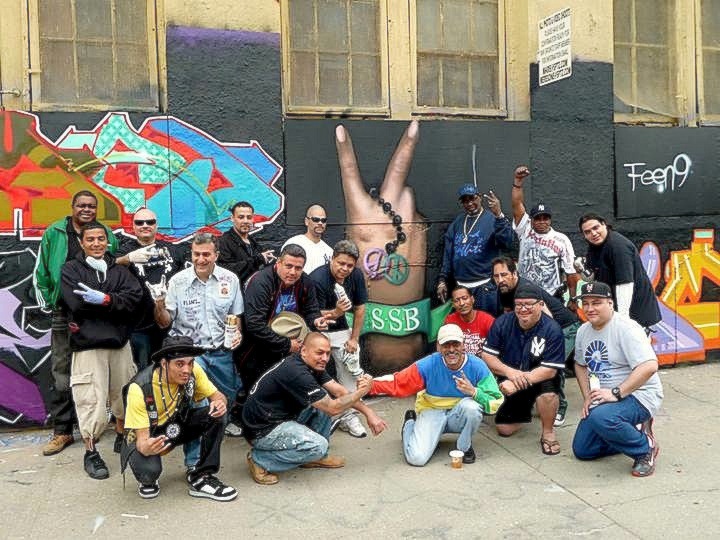
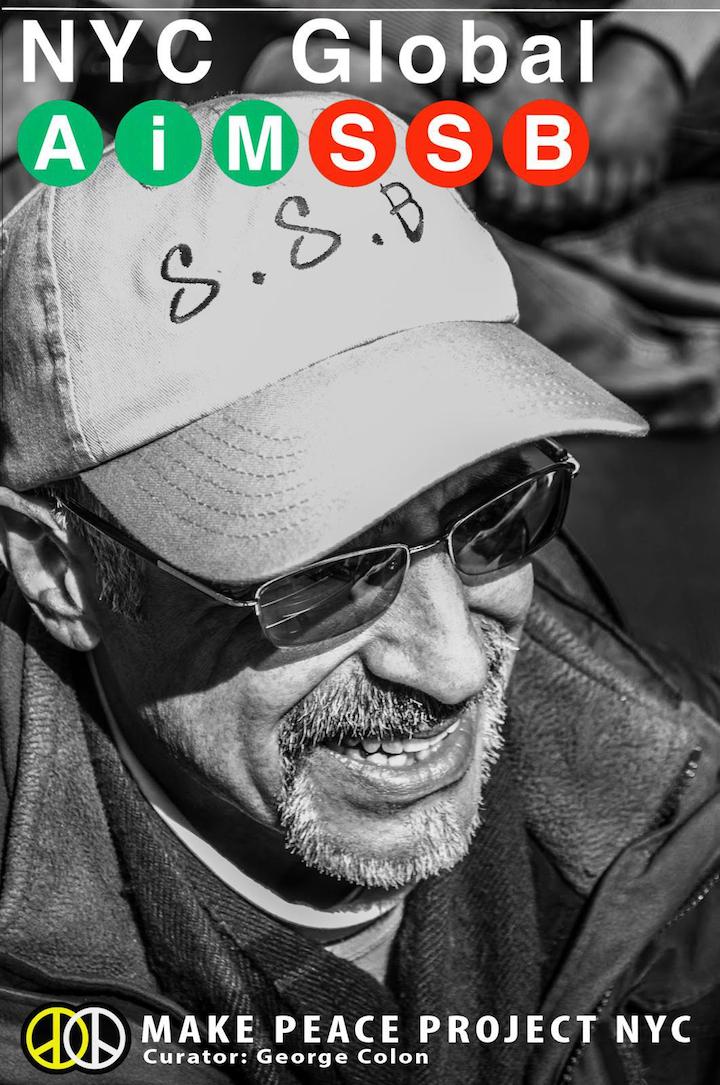
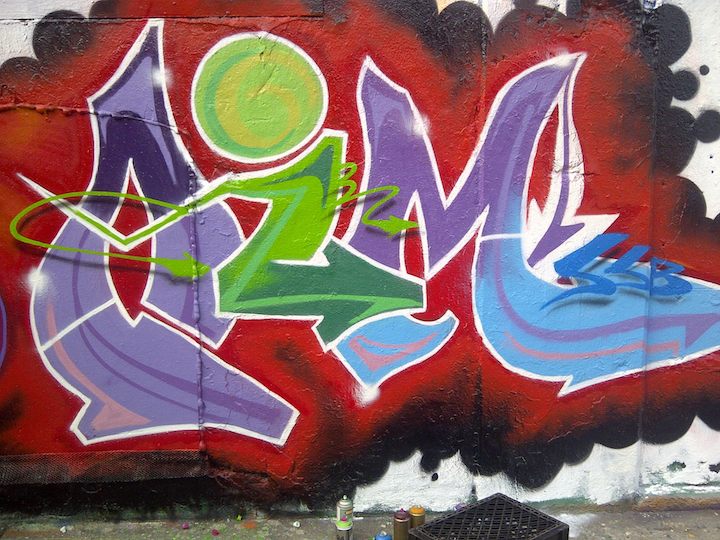
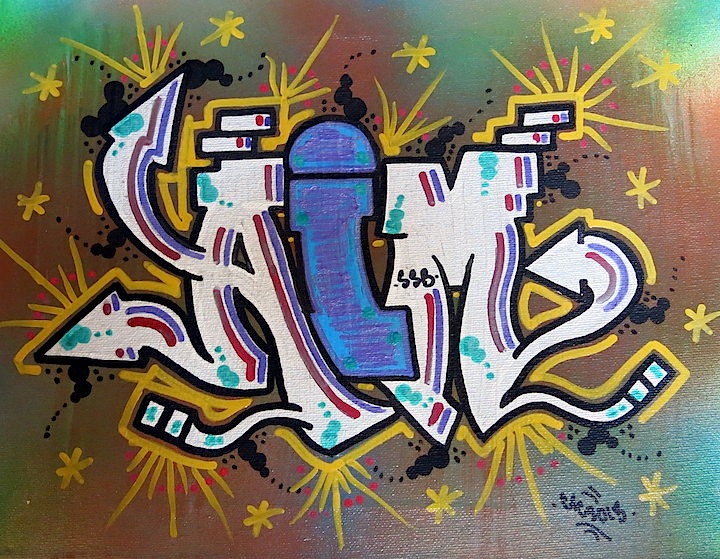
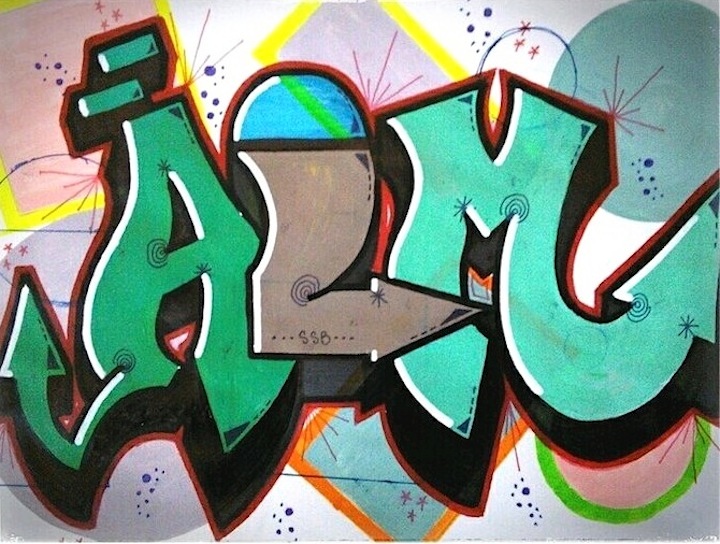
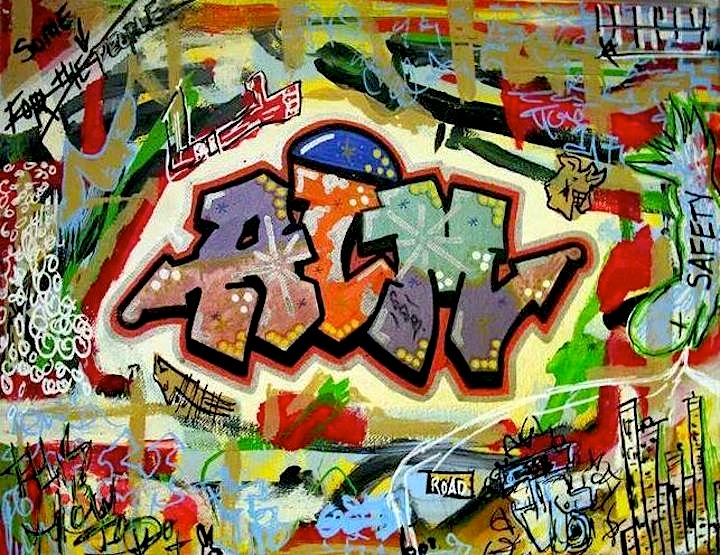

{ 5 comments… read them below or add one }
great interview.
What an open, honest and fresh interview with George. I feel like I know him from his responses.
Let’s see the photos of the work Mr. Colon claims to have done throughout NYC, specially on the subway system. Thank you.
Check out the Keith Baugh Subway NYC (1973-1975) page that you’re featured on. George is there, too.
This is a great personal interview – I love the images of the works as well, it’s inspiring!